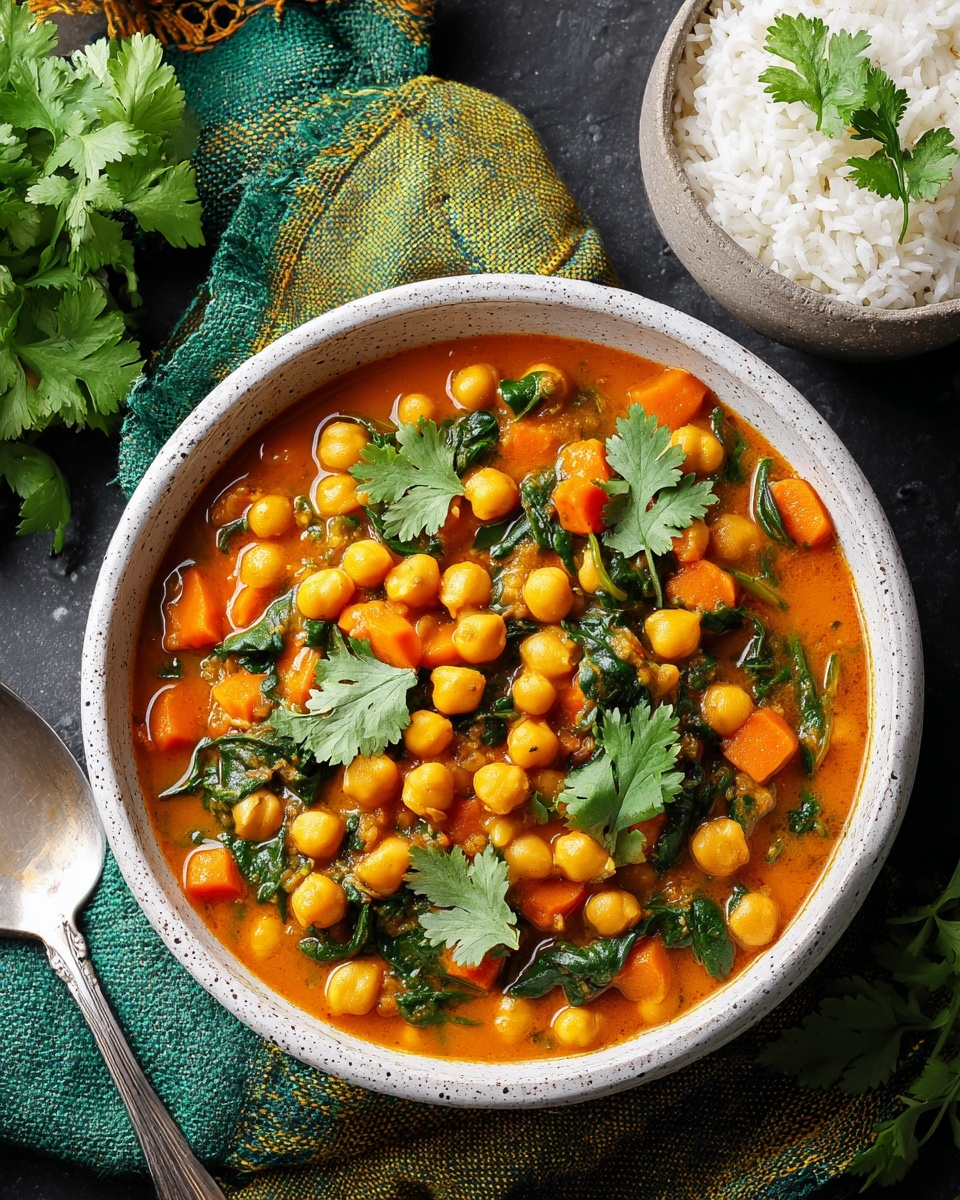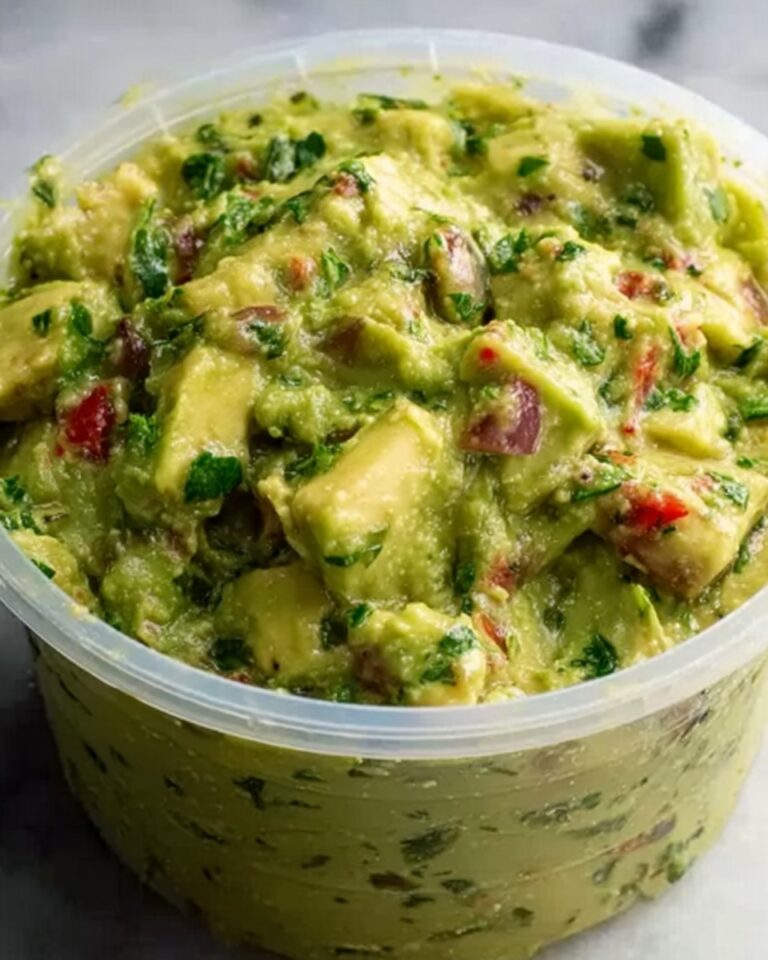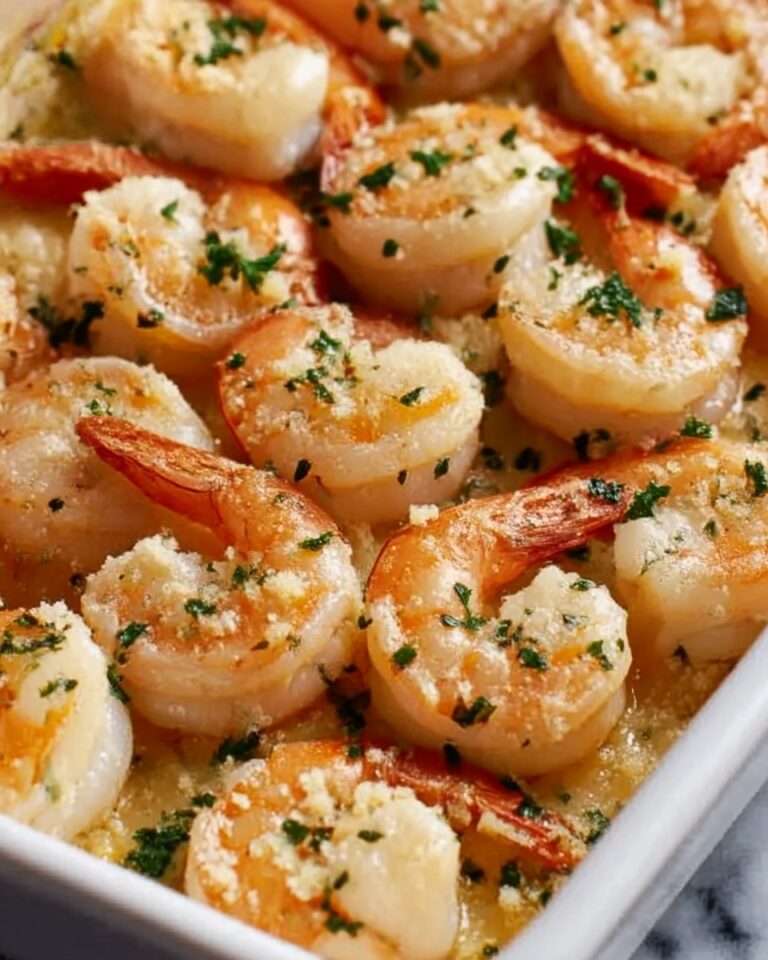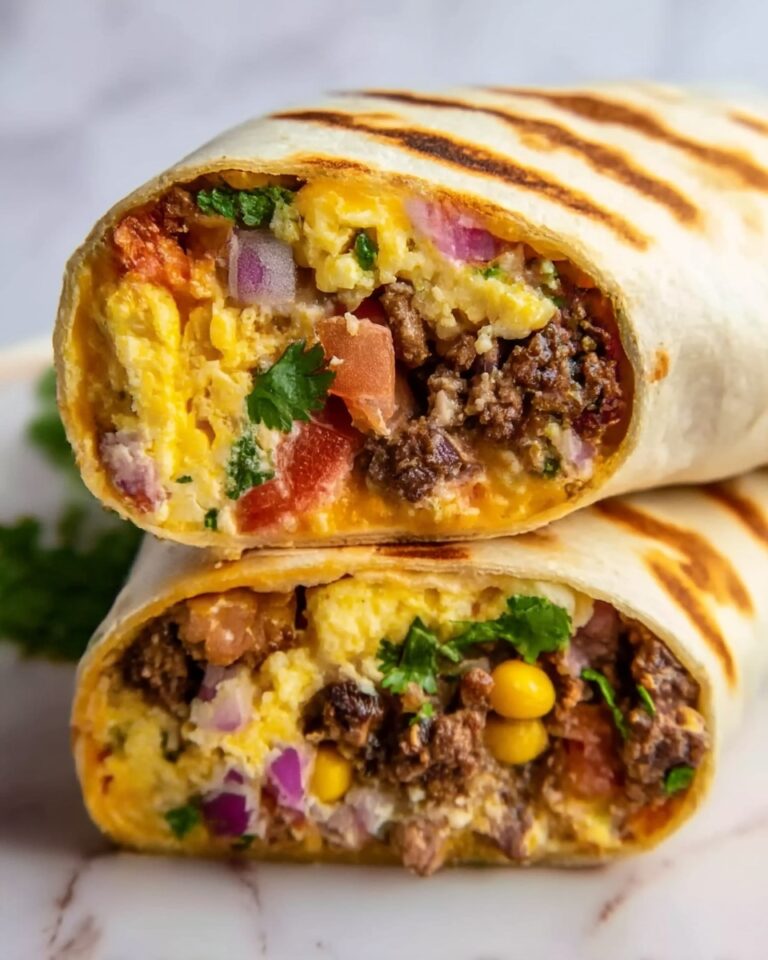If you are craving a hearty, flavorful dish that’s both comforting and nourishing, this Chickpea and Vegetable Curry Recipe is exactly what you need. Bursting with vibrant vegetables, creamy coconut milk, and a perfect blend of spices, it’s an absolute delight that’s loaded with texture and bold flavor from the very first bite. This recipe combines the earthiness of chickpeas with fresh vegetables simmered in a luscious sauce, making it a wonderful vegan option that’s easy to prepare any night of the week. Whether you’re a seasoned curry lover or just diving into plant-based meals, you’ll find this dish irresistible and deeply satisfying.
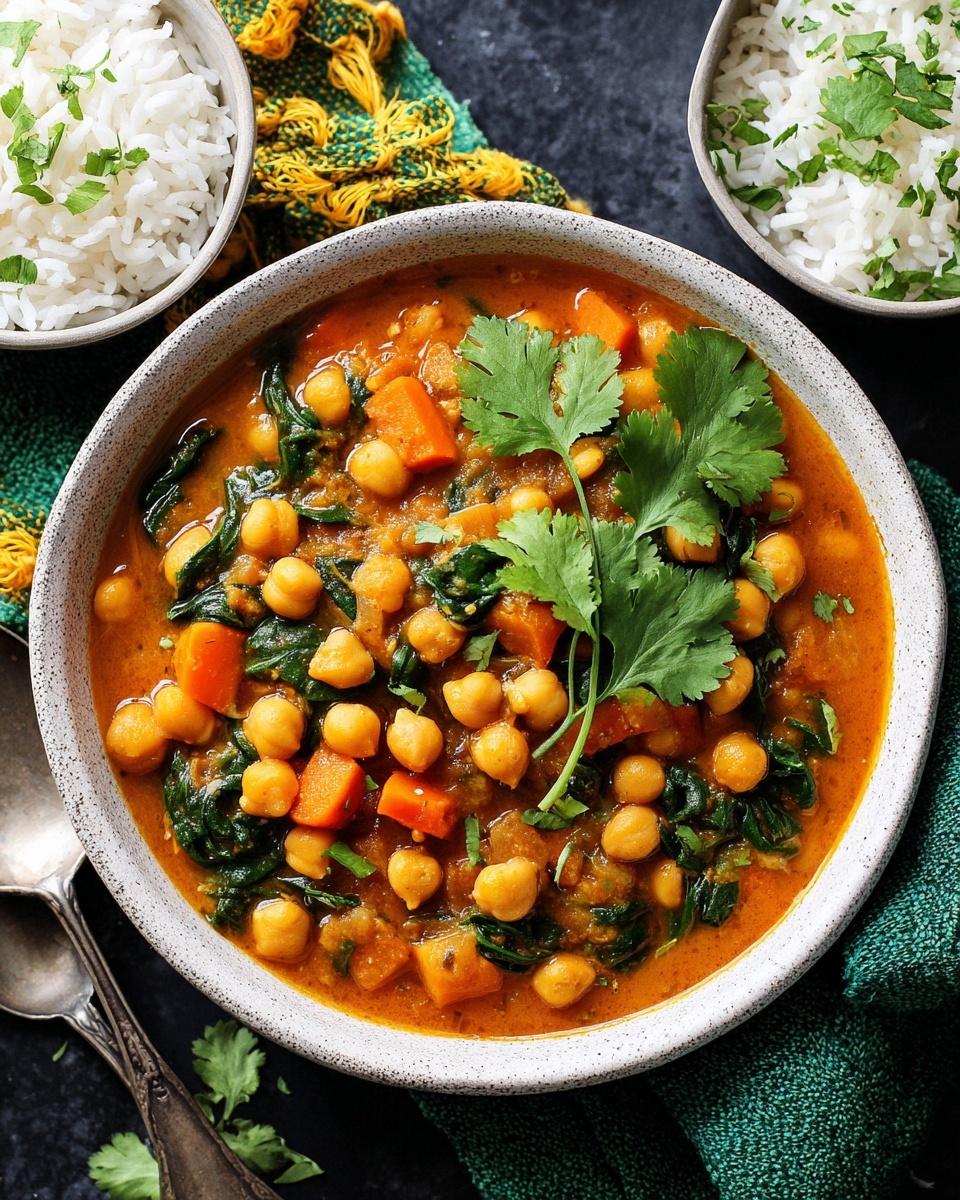
Ingredients You’ll Need
Simple ingredients make the best dishes, and every item in this Chickpea and Vegetable Curry Recipe plays a crucial role in creating layers of taste and texture that will leave you coming back for more.
- 1 tablespoon olive oil: A light, fruity oil that helps sauté the aromatics and bring richness.
- 1 medium yellow onion (diced): Adds sweetness and a tender base flavor when cooked down.
- 3 garlic cloves (minced): Brings a pungent, savory punch that elevates the entire dish.
- 1 tablespoon fresh ginger (grated): Adds bright warmth and a hint of zing for depth.
- 2 tablespoons curry powder: The heart of the spice mix that infuses a classic Indian-inspired flavor.
- 1 teaspoon ground cumin: Offers earthiness and a slightly nutty background note.
- ½ teaspoon turmeric: Provides a beautiful golden hue and gentle bitterness.
- ½ teaspoon salt: Enhances and balances the flavors.
- ¼ teaspoon black pepper: Adds a mild heat and complexity to the spice profile.
- 1 can (14.5 oz) diced tomatoes: Fresh acidity and sweetness that brightens the curry sauce.
- 1 can (15 oz) chickpeas (drained and rinsed): The protein-packed star that gives body and substance.
- 1 can (13.5 oz) coconut milk: Creamy and slightly sweet, it smooths out the spice and ties everything together.
- 2 cups chopped vegetables: Choose bell peppers, carrots, zucchini, or cauliflower for varied texture and vitamins.
- 1 cup baby spinach or kale: Adds leafy greens that wilt beautifully and infuse subtle earthiness.
- 1 tablespoon fresh lemon juice: Lifts all the flavors with a bright, refreshing finish.
- Chopped fresh cilantro (for garnish, optional): Adds a fresh herbal note and visual appeal.
How to Make Chickpea and Vegetable Curry Recipe
Step 1: Sauté the Aromatics
Start by heating olive oil in a large skillet or saucepan over medium heat. Add the diced onion and cook it gently for about three to four minutes until it becomes soft and translucent. This slow cooking releases the natural sweetness of the onion and creates a fantastic flavor foundation for your curry.
Step 2: Add Garlic, Ginger, and Spices
Stir in the minced garlic and grated ginger, cooking for just one minute until their fragrances fill the kitchen. Then sprinkle in the curry powder, ground cumin, turmeric, salt, and pepper. Stir continuously to coat the aromatics evenly with the spices, allowing their essential oils to bloom and mingle, which forms the soul of this Chickpea and Vegetable Curry Recipe.
Step 3: Incorporate Tomatoes and Chickpeas
Pour in the diced tomatoes along with their juices, gently bringing everything to a simmer. This creates a vibrant, tangy base. Next, add the drained chickpeas which bring a satisfying bite and hearty protein to the dish, making it wonderfully filling.
Step 4: Add Coconut Milk and Vegetables
Pour in the creamy coconut milk and toss in your choice of chopped vegetables such as bell peppers, carrots, zucchini, or cauliflower. Stir everything together until well combined, then reduce the heat to low, cover the pan, and let it simmer for 15 to 20 minutes. This allows the vegetables to tenderize and absorb all the rich, spiced flavors.
Step 5: Wilt the Greens and Finish
Once the vegetables are perfectly tender, stir in the baby spinach or kale. Cook for an additional two to three minutes until the greens have wilted beautifully. Finish by stirring in fresh lemon juice to brighten the flavors. Taste and adjust the seasoning if needed — this step ensures your Chickpea and Vegetable Curry Recipe bursts with perfect harmony in every spoonful.
How to Serve Chickpea and Vegetable Curry Recipe
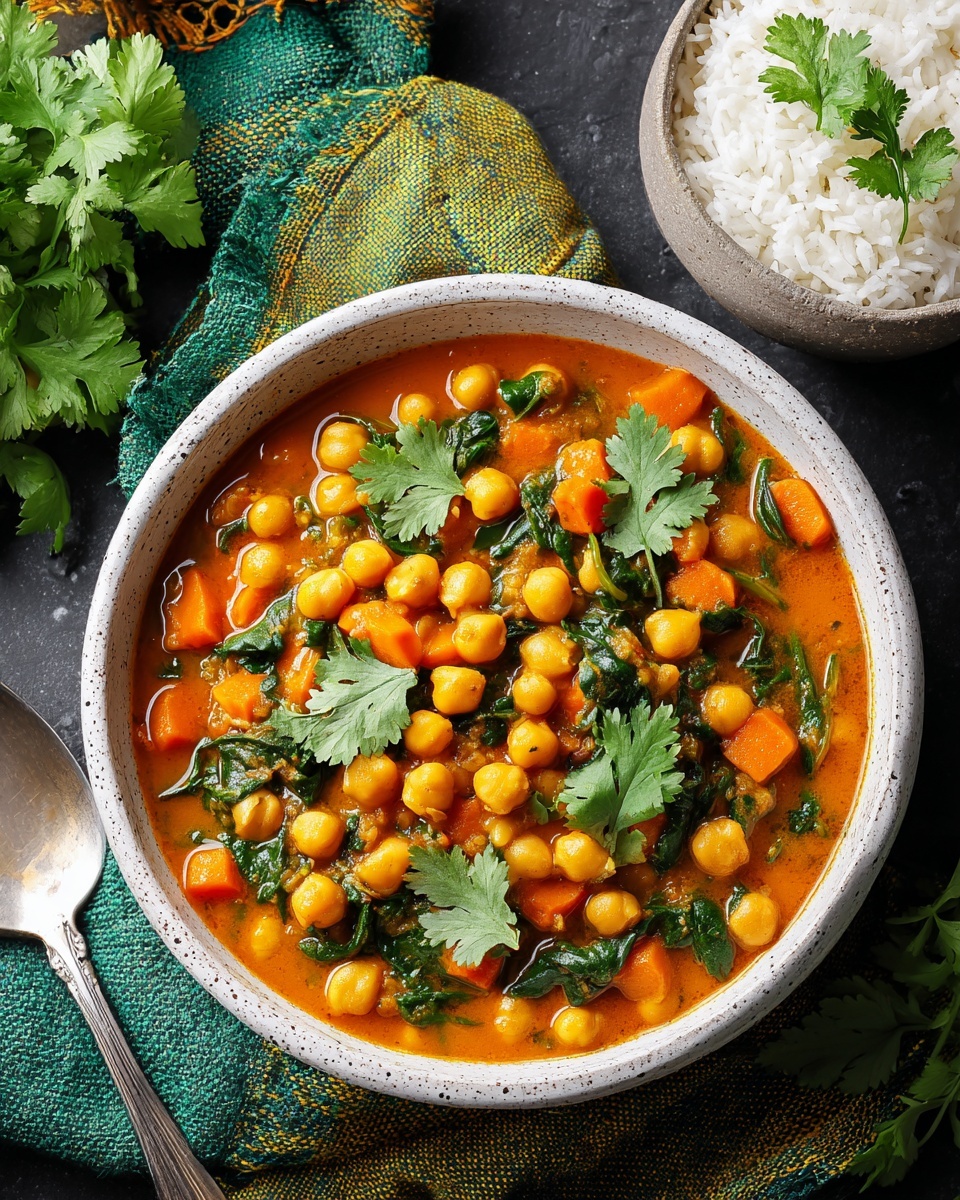
Garnishes
Garnishing your curry isn’t just about looks — it adds another dimension of flavor and freshness. Sprinkle a handful of chopped fresh cilantro over the top to give the dish a lovely herbal brightness that complements the deep spices beautifully.
Side Dishes
This curry pairs incredibly well with fluffy basmati rice, which soaks up the luscious sauce perfectly. Alternatively, warm naan bread makes for a fantastic accompaniment, allowing you to scoop up every last bit of curry. For a lighter option, serve it alongside a crisp cucumber salad to balance the warmth and spice.
Creative Ways to Present
For an inviting presentation, serve the curry in colorful bowls with a drizzle of coconut cream swirled on top. You can also add a wedge of lemon on the side to let each guest customize their brightness. Layering the curry over quinoa or millet offers a fresh twist, making this recipe versatile for any occasion.
Make Ahead and Storage
Storing Leftovers
This Chickpea and Vegetable Curry Recipe keeps wonderfully in the fridge for up to four days when stored in an airtight container. The flavors actually deepen over time, making leftovers taste even more delicious the next day.
Freezing
You can freeze this curry for up to three months. Let it cool completely before transferring to freezer-safe bags or containers. When you’re ready to enjoy it, thaw overnight in the fridge for a convenient and tasty meal on busy days.
Reheating
Reheat the curry gently on the stovetop over low-medium heat, stirring occasionally until warmed through. If the sauce seems too thick, add a splash of water or coconut milk to loosen it up. Avoid overheating to preserve the fresh flavors and texture.
FAQs
Can I use fresh chickpeas instead of canned?
Absolutely! Fresh chickpeas can be used but need to be soaked overnight and cooked until tender before adding them. Using canned chickpeas is a handy shortcut that saves time without compromising flavor.
What vegetables work best in this curry?
This recipe is very flexible. Bell peppers, carrots, zucchini, and cauliflower are excellent choices because they hold their shape well and add color and texture, but feel free to use whatever vegetables you have on hand.
Is this curry spicy?
The base recipe has a mild warmth thanks to the curry powder and spices, but it’s not overly spicy. If you like your curry hotter, simply add cayenne pepper or chopped fresh chili during cooking to taste.
Can I make this recipe gluten-free?
Yes, this Chickpea and Vegetable Curry Recipe is naturally gluten-free as long as you check the labels on your curry powder and canned products to ensure no gluten-containing additives are present.
How can I add more protein to this dish?
Chickpeas provide a good amount of protein, but if you want to boost it, consider adding tofu cubes, cooked lentils, or even a sprinkle of toasted nuts on top for extra texture and nutrition.
Final Thoughts
This Chickpea and Vegetable Curry Recipe is one of those dishes that feels like a warm hug on your plate. It’s nutritious, bursting with flavor, and incredibly easy to make with staples you probably already have in your pantry. I can’t encourage you enough to give it a try — it’s perfect for cozy dinners, meal prep, or impressing friends with a delicious homemade vegan curry. Once you taste it, I bet this recipe will become a beloved staple in your kitchen too.
Print
Chickpea and Vegetable Curry Recipe
- Prep Time: 10 minutes
- Cook Time: 25 minutes
- Total Time: 35 minutes
- Yield: 4 servings
- Category: Main Course
- Method: Stovetop
- Cuisine: Indian-Inspired
- Diet: Vegan
Description
This Chickpea and Vegetable Curry is a vibrant, hearty vegan dish featuring a rich blend of spices, creamy coconut milk, and nutritious vegetables. Perfectly seasoned and simmered to meld the flavors, it’s an ideal plant-based main course that’s both satisfying and wholesome.
Ingredients
Main Ingredients
- 1 tablespoon olive oil
- 1 medium yellow onion, diced
- 3 garlic cloves, minced
- 1 tablespoon fresh ginger, grated
- 2 tablespoons curry powder
- 1 teaspoon ground cumin
- ½ teaspoon turmeric
- ½ teaspoon salt
- ¼ teaspoon black pepper
- 1 can (14.5 oz) diced tomatoes
- 1 can (15 oz) chickpeas, drained and rinsed
- 1 can (13.5 oz) coconut milk
- 2 cups chopped vegetables (such as bell peppers, carrots, zucchini, or cauliflower)
- 1 cup baby spinach or kale
- 1 tablespoon fresh lemon juice
Optional Garnish
- Chopped fresh cilantro
Instructions
- Sauté Aromatics: Heat olive oil in a large skillet or saucepan over medium heat. Add the diced onion and cook for 3 to 4 minutes until softened and translucent.
- Add Garlic and Ginger: Stir in the minced garlic and grated ginger, cooking for 1 minute until fragrant to enhance the base flavors.
- Toast Spices: Add curry powder, ground cumin, turmeric, salt, and black pepper. Stir continuously to evenly coat the aromatics and release the spices’ flavors.
- Simmer Tomatoes: Pour in the diced tomatoes with their juices and bring the mixture to a simmer, allowing the flavors to meld.
- Add Chickpeas and Vegetables: Stir in the chickpeas, coconut milk, and chopped vegetables. Combine well, then reduce the heat to low, cover, and simmer for 15 to 20 minutes until the vegetables are tender.
- Incorporate Greens: Add the baby spinach or kale and cook for an additional 2 to 3 minutes until wilted and integrated into the curry.
- Finish and Season: Stir in fresh lemon juice for brightness, taste the curry, and adjust seasoning if needed.
- Serve: Serve hot, garnished with chopped fresh cilantro if desired, alongside rice or naan for a complete meal.
Notes
- This curry perfectly pairs with basmati rice or naan bread.
- Use any combination of vegetables you have on hand for versatility.
- For a spicier version, add a pinch of cayenne pepper or chopped chili during cooking.

